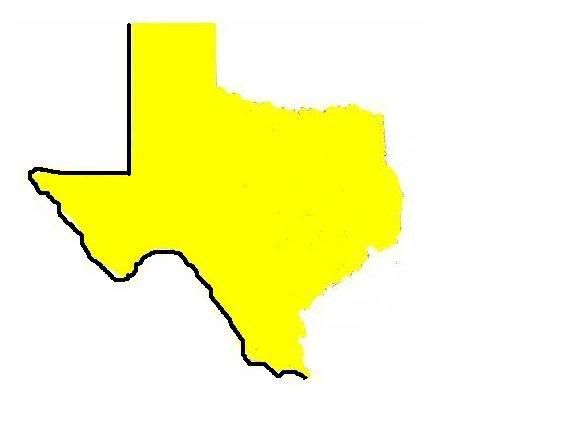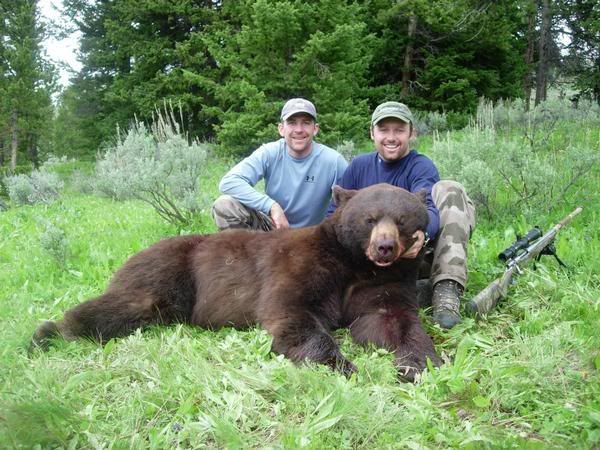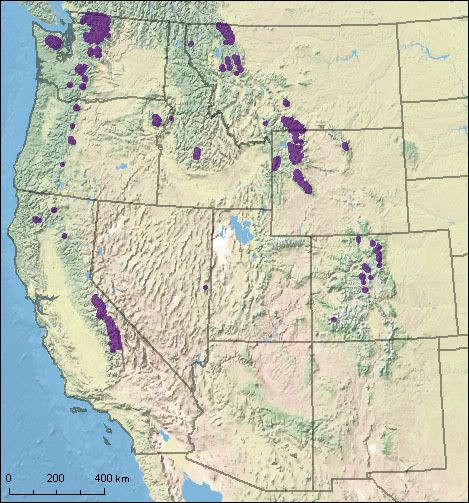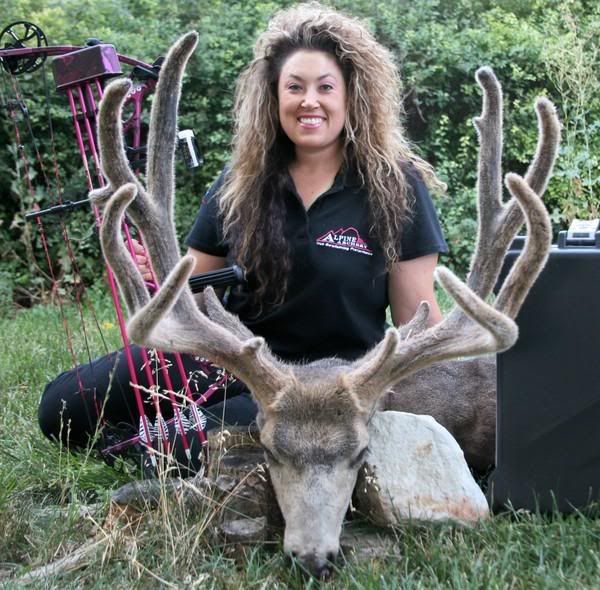
If you live in Nevada, you ought to be interested in this. If you don’t, you still ought to pay attention, because something similar is probably happening in your state. Personally, I am less than delighted at how such a large amount of money ($2.4 billion) could be so well squandered. It is incredible. This amount of money could really help mule deer, and/or other game animals if it were put to best use. The “conservation use” mentioned is hugger conservation. So, Nevada is losing on both sides of this equation. More land for development and the money from the land sale is doing little to help wildlife.
—————————————–
“……..In the real world, however, it’s the Southern Nevada Public Lands Management Act. Since 1998, the act has allowed the Bureau of Land Management to sell public lands within a specific boundary around Las Vegas. A large portion of that revenue—about 85 percent—funds conservation work in Nevada and Lake Tahoe. So far, the act has supplied around $2.4 billion for environmental projects in Nevada, with about 23,000 acres more to be sold.In this eighth and latest round, $78.9 million in funding has been approved for groups including the Nevada Fire Safe Council, Desert Research Institute, Nevada Land Conservancy and Washoe County Department of Parks and Recreation. Of that, $28.6 million is for projects in Northern Nevada.
This is down from the $132 million approved for Round 7 funding last year, and dramatically less than the $936 million approved during Round 6.
“The decrease is nothing more than a direct correlation to the land sales,” says Hillerie Patton, of the BLM Las Vegas Field Office. “Three years ago, we were doing land sales at $600 or $700 million. … Developers really aren’t building a lot of houses right now.”
Here’s a rundown of Round 8 earmarks:
• Fifty percent of it, or $14.3 million, is for fire prevention and fuels reduction in the Lake Tahoe Basin and Carson Range.
• Thirty-nine percent, or $11.09 million, is the “Washoe County Regional Parks and Open Space” project to protect about 121 acres of open space in the Ballardini Ranch area in Southwest Reno.
• Eleven percent, or $3.1 million, is for land acquisitions. One project is High Rock, 1,282 acres of Washoe and Humboldt counties near the Black Rock Desert. It’s noted for its scenic, historic and wildlife resources, including bighorn sheep, raptors, sage grouse, mule deer and pronghorn. The other acquisition project is Green Gulch, two miles north of Bordertown. Its 650 acres is within critically designated Mountain Quail habitat and is also habitat for about 500 deer during fall migration and sage grouse, according to its project summary.
Just because a group has funding set aside doesn’t mean the project will be necessarily carried out. There are still yards of red tape to cut through in terms of permits, environmental analysis, etc.
This is something Lynda Nelson knows well. She’s planning manager for Washoe County Department of Regional Parks and Open Space, whose application for $11 million for open space protection within Ballardini Ranch was chosen by the BLM as the No.1 priority project for parks, trails and natural areas.
“That money is secured,” says Nelson. “But it’s not a done deal by any means.”
An appraisal needs to be done, and landowners have to accept that amount for the project to move forward. The Ballardini Ranch area—of which the 121 acres is just a small part—has been controversial in Reno for years as developers also have been vying for the land.
“We’re moving forward,” she says. “But with lands deals—as I’ve come to learn—until that escrow closes, anything is possible.”
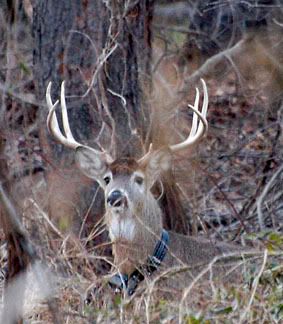 One of the animals they are tracking is a buck named Thor. Thor looks a little like a whitetail, but is really a mule deer – you can tell by the size. He looks pretty suave with his collar, don’t you think? How would you like to track a big buck, like this, for a while?
One of the animals they are tracking is a buck named Thor. Thor looks a little like a whitetail, but is really a mule deer – you can tell by the size. He looks pretty suave with his collar, don’t you think? How would you like to track a big buck, like this, for a while?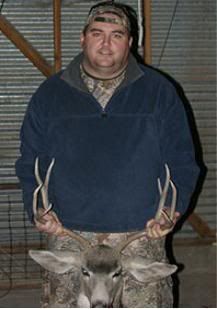 As for Mr. Turk, he was a successful Mule Deer hunter in SE New Mexico, where his family owns a sizeable ranch, by harvesting this 10pt. (Eastern Count) buck mule deer. The buck has an extra cheater which is not visible in the picture. This buck was harvested in 2007. According to Mr. Turk, the herd numbers were down, but his party managed to harvest several nice bucks.
As for Mr. Turk, he was a successful Mule Deer hunter in SE New Mexico, where his family owns a sizeable ranch, by harvesting this 10pt. (Eastern Count) buck mule deer. The buck has an extra cheater which is not visible in the picture. This buck was harvested in 2007. According to Mr. Turk, the herd numbers were down, but his party managed to harvest several nice bucks.
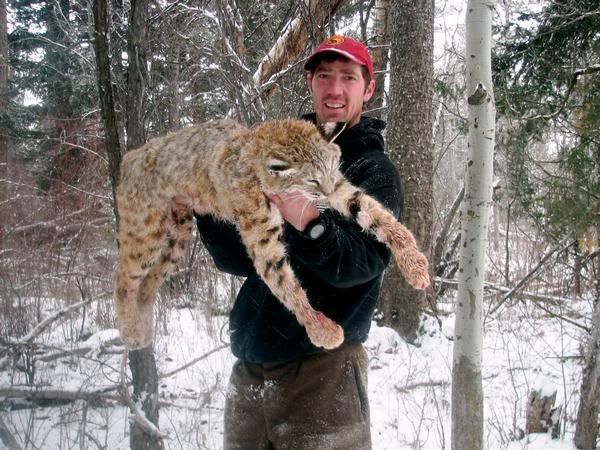 I put the cat in the crosshairs and squeezed off my last round, he did not flinch. I thought I had missed him. I sat still for a little while and then I yelled at the cat to see if he was still alive, I got not reaction. I climbed down from my stand and approached the two animals in the field. The Bobcat still had a death grip on the doe and was looking right at me as I approached, with an empty gun. What I saw amazed me. The Bobcat was stone cold dead but he still maintained his grip on the doe. I called everyone at camp to come look and take pictures. When it was time to load the doe in the truck we had to load both the doe and the bobcat because I could not separate them.
I put the cat in the crosshairs and squeezed off my last round, he did not flinch. I thought I had missed him. I sat still for a little while and then I yelled at the cat to see if he was still alive, I got not reaction. I climbed down from my stand and approached the two animals in the field. The Bobcat still had a death grip on the doe and was looking right at me as I approached, with an empty gun. What I saw amazed me. The Bobcat was stone cold dead but he still maintained his grip on the doe. I called everyone at camp to come look and take pictures. When it was time to load the doe in the truck we had to load both the doe and the bobcat because I could not separate them. 